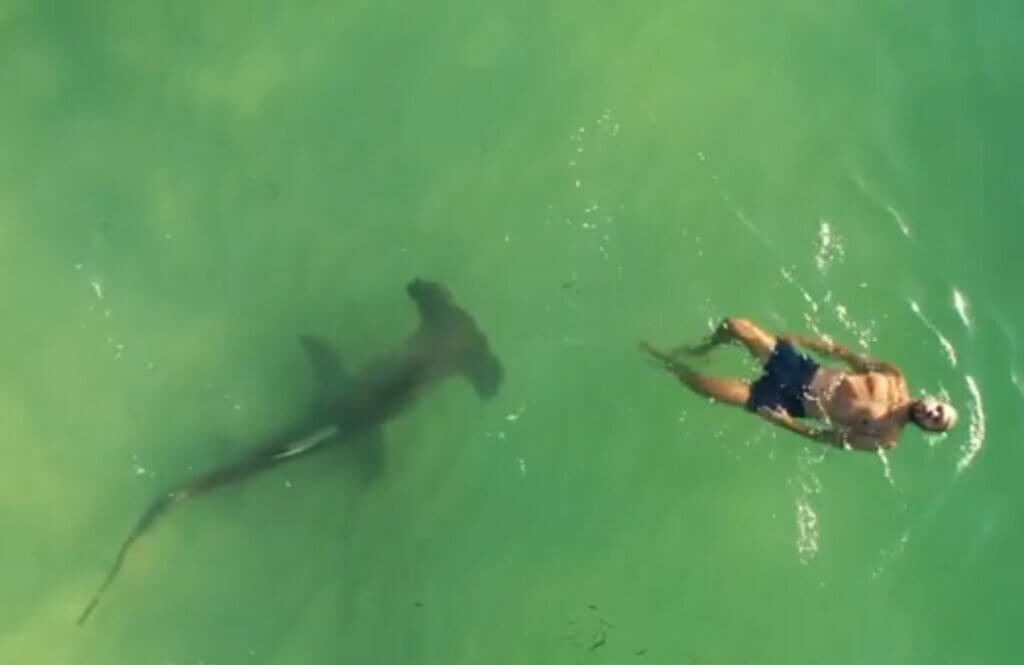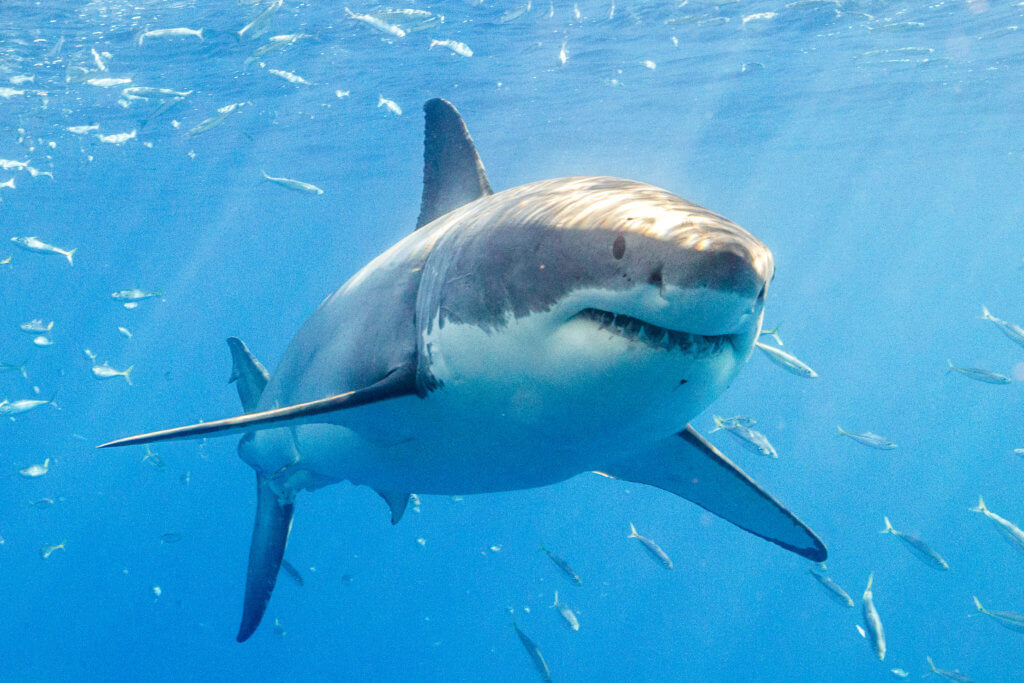Why sharks bite humans is a mystery, although there are numerous theories. A study done at the Taronga Zoo in Sydney, Australia supports the “mistaken identity theory.” The theory is that sharks mistake humans for their usual prey.
Shark bites on humans are rare but are frequent enough to generate substantial fear among the public — especially if you’re a beachgoer. Attacks can devastate victims and first responders. They can also have a substantial negative impact on local economies.
Bites have adverse consequences for sharks too
They often result in lethal shark mitigation methods which also harm vulnerable shark populations and non-target species. Numerous shark species are known to have bitten humans, but three species are responsible for most injuries and fatal bites: great white sharks, bull sharks, and tiger sharks — with great whites being the most common aggressors observed by researchers.
Public support for these mitigation measures is thought to reflect the disproportionate level of fear associated with sharks and the uncertainties that still surround the reasons for shark attacks and their possible prevention.

Other theories for sharks biting humans include curiosity, hunger, and aggressive/defensive behavior. Researchers categorize shark bites as either “provoked” or “unprovoked.” A provoked shark bite may be an aggressive or defensive move in response to disturbance by a human, such as a diver touching a shark, or a fisher spearing a shark. Unprovoked bites are the most puzzling and, understandably, cause the most fear.
Surfers suffer the most fatal shark bites, especially from juvenile great white sharks. The similarity in appearance of surfers and seals when viewed by white sharks from below may be a potential cause of shark attacks. Following an initial attack on a seal, white sharks retreat, allowing the animal to bleed and weaken before returning to feed. Humans are also usually released after the initial strike, but the shark seldom returns to feed. This difference may be partly attributed to the removal of a shark bite victim from the water before the shark can consume them, intervention from other people, or the victim fighting back.
Predatory behavior has been studied extensively in great whites, which are thought to rely heavily on their vision to detect and target their prey, especially at close range (up to roughly 50 feet). White sharks are more successful when hunting prey located at the surface, studies reveal, where the silhouette probably aids the identification of prey against the background skylight. In addition, white sharks have eye adaptations that enhance prey detection at the surface, such as cone photoreceptors and a retinal region for viewing a zone above and to the sides of the shark’s head.

Are shark attacks a result of poor vision?
The mistaken identity theory has received little scientific attention, and the visual similarity between humans and seals has been debated based on human visual perception, rather than that of sharks. However, recent progress in understanding the shark visual system has enabled a more useful investigation of the similarities between seals and humans from a shark’s perspective.
This study tested the mistaken identity theory by comparing videos of seals (the natural prey of great white sharks), humans swimming and humans paddling surfboards, as a white shark might view these from below.
Videos were modified to reflect how a shark’s retina would perceive visual motion and shape cues. Motion cues of humans swimming, humans paddling surfboards, and seals swimming did not substantially differ. The shape of paddled surfboards and human swimmers was also like that of seals with their flippers extended away from the body. The difference in shape between seals with extended flippers versus flippers close to their sides was bigger than between seals with extended flippers and surfboards or human swimmers. From the visual perspective of a white shark, motion and shape cues between seals and humans were indistinct, which supports the mistaken identity theory behind some bites.
It may be a scientific leap to suggest that poor vision in sharks supports the mistaken identity theory, but the lack of other explanations does not validate a theory. There’s still a long way to go with understanding specifically why sharks bite humans.

This study, from a visual perspective, supports the mistaken identity theory. Sharks, however, also receive information through their other sensory systems, including smell, hearing, and skin sensations. For example, great white sharks have large nerves for smell, suggesting that odor cues may be important for identifying prey. It may be possible for white sharks to discriminate humans from seals based on other sensory cues.
There is evidence to suggest that visual cues alone are sufficient to trigger an attack. White sharks will attack seal-shaped decoys and even inanimate objects such as seaweed floating at the surface, which do not emit odor. Also, other sensory cues such as vibration and sound may contribute to the appearance of an object as potential prey. While it seems unlikely that every bite on a human by great white sharks is a result of mistaken identity, the results suggest that in circumstances where surface objects, like surfers, are targeted by white sharks from below it is very possible.
The scientists concluded that the results indicate that a shark’s poor vision may result in biting humans because of mistaken identity or ambiguous visual cues. Researchers carried out these experiments under ideal viewing conditions, so this scenario is likely to be of greater significance under more realistic conditions of dim light, surface chop, or turbid water.


Not sure what it was but looked like a miniature shark that bit into my heel when we were wading through a shallow reef at sunset. Cute little thing(about 12+ “). Would not let go even after exiting the water. Finally let go when doused with fresh water. Then back into the bay. Not a deep bite but enough to bleed. Felt nothing till my partner mentioned the blood in the water.